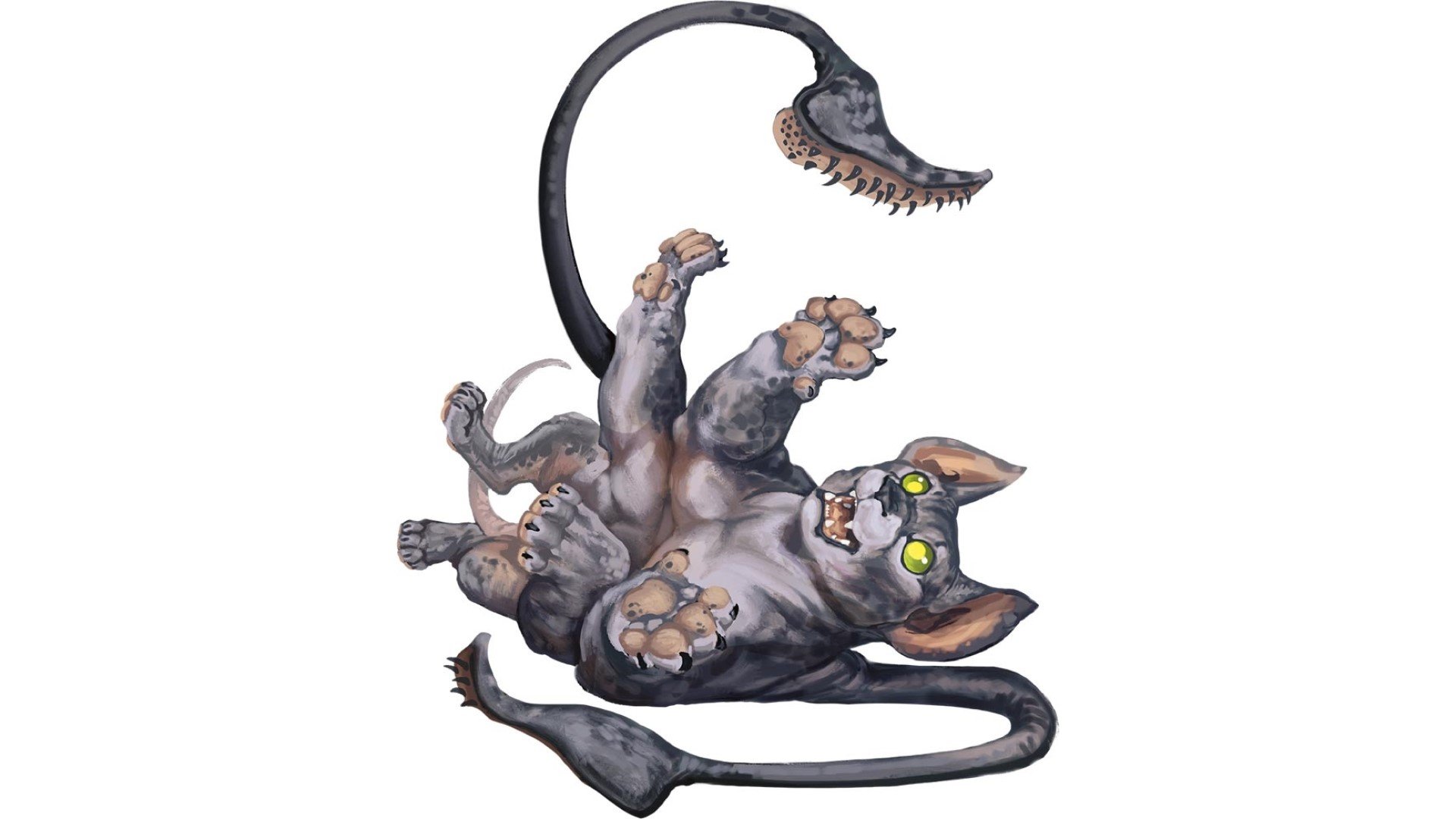The DnD Displacer Beast is a monstrous cat-like creature bred to hunt and kill. Often at home in dens of evil, these ferocious felines relish the kill. They’ll happily lure, trap, and toy with a target before turning it into their next meal. If you think watching the local tabby torture birds is grim, you haven’t seen anything yet.
The Displacer Beast 5e has origins that stretch far back beyond the current version of D&D. They’ve been around since the earliest edition, and they’re one of the most iconic DnD monsters found in the game. Below you’ll find a complete rundown of their most up-to-date stats and lore. And once you’re done learning here, be sure to check out our other handy TTRPG guides – Wargamer can help you pick everything from your next DnD classes to new DnD character sheets.
What is a DnD Displacer Beast?
You might mistake a Displacer Beast for a particularly large panther – apart from its six legs and the two long tentacles sprouting from its shoulders. These felines used to be found in the Feywild. For a time they were ‘domesticated’ by the Fey, who bred them into even fiercer hunters than before. However, the Displacer Beasts under the Fey’s command eventually escaped – and many now hunt in the mortal realms.
You can still find people with pet Displacer Beasts in the world of D&D, but the relationship needs to benefit the beast as well as its ‘owner’. While they aren’t known for exceptional smarts, Displacer Beasts are intelligent enough not to stick around unless it’s worth their while.
The main thing these big cats are known for is their ability to bend light. This means a Displacer Beast can create the illusion that it’s in a different nearby location – something that comes very handy in combat. Displacer Beasts can easily avoid harm thanks to their abilities – if an effect lets them take half damage on a successful saving throw, the beast can dodge the damage altogether. Any attacks against the beast also have disadvantage if it’s putting its illusory powers to good use. This won’t help forever, though – the illusion is broken as soon as the cat gets hit.
Displacer Beast 5e stats
Here are the stats for the DnD Displacer Beast:
| Armour class | 13 |
| Hit points | 85 (10d10 + 30) |
| Proficiency bonus | +2 |
| Challenge rating | 3 |
| Strength | 18 (+4) |
| Dexterity | 15 (+2) |
| Constitution | 16 (+3) |
| Intelligence | 6 (-2) |
| Wisdom | 12 (+1) |
| Charisma | 8 (-1) |
According to the Monster Manual, a Displacer Beast has a walking speed of 40ft, a Darkvision range of 60ft, and a Passive Perception of 11. Its main method of attack is its tentacles. These have sharp barbs on the end, so they can deal piercing and bludgeoning damage to an unlucky target.
Displacer Beast 5e tips
With a challenge rating of three, a single Displacer Beast should be little trouble for a low-level D&D party. However, these cruel cats are known to hunt in packs, often using a single beast to lure its victims into an ambush. Any DnD encounter builder 5e will tell you that even three Displacer Beasts can pose a serious threat to more experienced adventurers.
Displacer Beasts are slightly faster than the average player-character, and they have 10ft of reach with their tentacles. Their best tactic combat-wise should be to get within range, strike, then get out again using their remaining movement. Attacks of opportunity are only triggered if a creature was within five feet and then moves out of range, so the Displacer Beast can afford to duck and weave safely.
A Displacer Beast that gets stuck in close range of a player is setting itself up to take damage – especially if the displacement illusion has already failed. The worst thing a Displacer Beast can do is get dog-piled by an entire party – it can’t fight everyone at once, even with two tentacles.
For players, there are other ways to exploit the Displacer Beast’s weak points. Firstly, incapacitating the Displacer Beast is an alternative way to destroy its displacement illusion. 5e spells like Tasha’s Hideous Laughter can help break down its most important defence.
You could also try exploiting the creature’s low Intelligence – Mind Sliver 5e deals psychic damage on a failed Intelligence saving throw, for example. It also has the added benefit of hindering any saving throws the Displacer Beast makes before the end of the caster’s next turn. If someone can guarantee a saving throw, this is a good opportunity to ensure the creature fails saving throws whose damage it could usually dodge.




